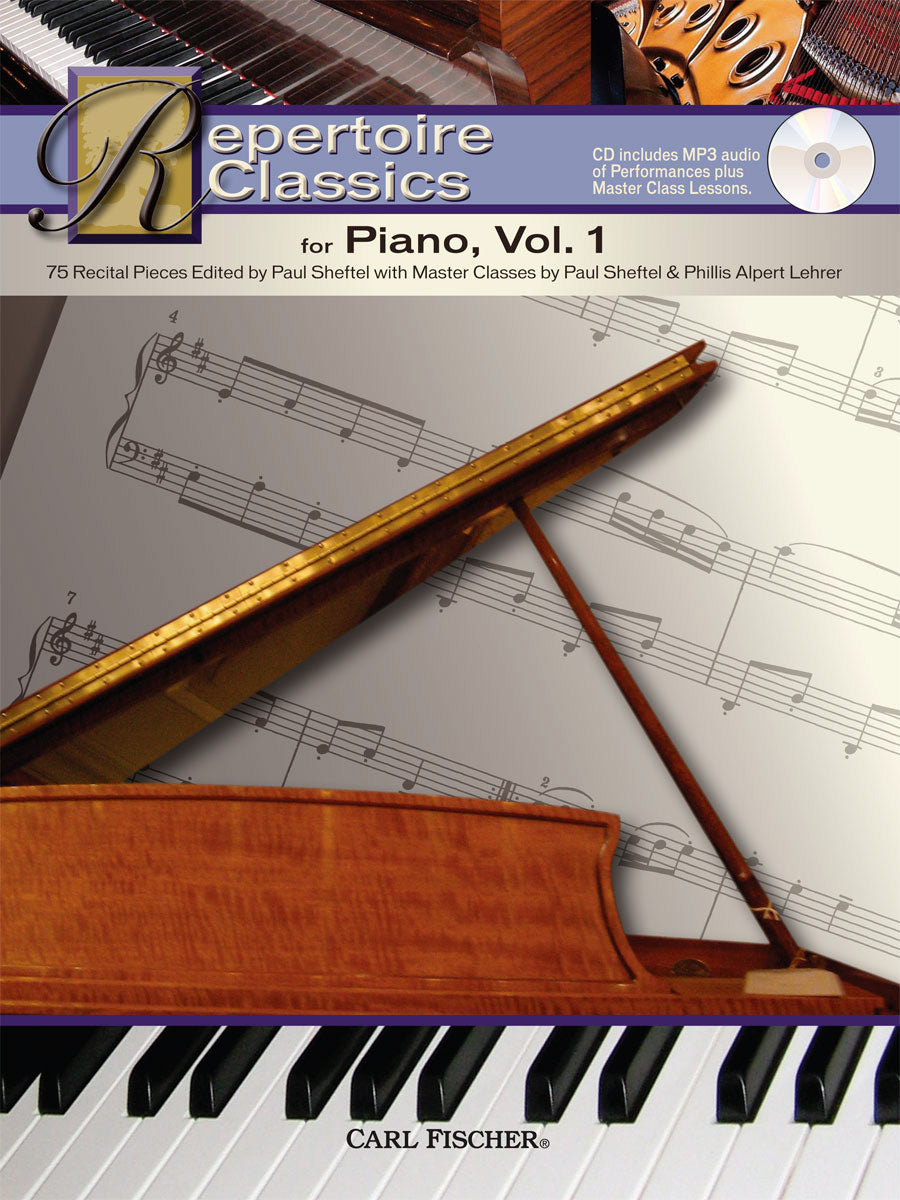Repertoire Classics for Piano - Volume 1
In stock and typically ships within 1 business day.
- Composers: Mikhail Glinka (1804-1857), Wolfgang Amadeus Mozart (1756-1791), Edvard Grieg (1843-1907), Joseph Haydn (1732-1809), Leopold Mozart (1719-1787), Cornelius Gurlitt (1820-1901), Robert Schumann (1810-1856), Carl Czerny (1791-1857), Jean-Philippe Rameau (1683-1764), Franz Schubert (1797-1828), Anton Diabelli (1781-1858), Jeremiah Clarke (1674-1707), Georg Philipp Telemann (1681-1767), Jean-Baptiste Lully (1632-1687), Felix Le Couppey, James Hook (1746-1827), Daniel Gottlob Türk (1750-1813), François Couperin (1668-1733), Louis Köhler (1820-1886), Vladimir Rebikov (1866-1920)
- Format: Book & Audio Access
- Instrumentation: Piano
- ISBN:
- Size: 9.1 x 11.9 inches
- Pages: 97
Description
Repertoire Classics for Piano is a comprehensive and progressively graded collection of classic solos for piano. The included data CD contains the following for each solo: performance tracks as well as master class lessons featuring performance and practice techniques by piano pedagogues Paul Sheftel and Phyllis Lehrer for each piece. Listen to performances from a real concert grand piano and get the benefit and insight of master instructors as they teach the finer points of performance, technique and even offer some historical context. These books contain a fine mix of easy to play, unabridged, original piano solos written by "the masters" for beginning pianists. Many of the pieces in this collection are on state contest/festival required music lists and cover performance levels from grade 2 through 5. There is a wide variety of music from all style periods and by some of the greatest composers included. These collections are a must for piano students and teachers.
Publishers use a lot of words to describe what they sell, and we know it can be confusing. We've tried to be as clear as possible to make sure you get exactly what you are looking for. Below are descriptions of the terms that we use to describe the various formats that music often comes in.
Choral Score
A score for vocalists that only contains the vocal lines. The instrumental parts are not there for reference. Generally, cheaper than a vocal score and requires multiple copies for purchase.
Facsimile
Reproductions of the original hand-written scores from the composer.
Full Score
For ensemble music, this indicates that the edition contains all parts on a single system (there are not separate parts for each player). In larger ensembles, this is for the conductor.
Hardcover
Hardbound. Generally either linen-covered or half-leather.
Orchestral Parts
Similar to a wind set, this is a collection of parts. In the case of strings, the numbers listed are the number of copies included, though generally these are available individually (often with minimum quantities required).
Paperback
When publishers offer multiple bindings (e.g. hardcover) or study scores, this is the "standard" version. If you're planning to play the music, this is probably what you want.
Performance / Playing Score
A score of the music containing all parts on one system, intended for players to share. There are not separate parts for each player.
Set of Parts
For ensemble music, this indicates that there are separate individual parts for each player.
Solo Part with Piano Reduction
For solo pieces with orchestra, this is a version that contains a piano reduction of the orchestra parts. For piano pieces, two copies are typically needed for performance.
Study Score
A small (think choral size) copy of the complete score meant for studying, and not playing. They make great add-ons when learning concertos and small chamber works.
Vocal Score
A score prepared for vocalists that includes the piano/organ part or a reduction of the instrumental parts.
Wind Set
For orchestral music, this is a collection of wind and percussion parts. The specific quantities of each instrument are notated.
With Audio
In addition to the printed music, the edition contains recordings of the pieces. This may be an included CD, or access to files on the internet.
With / Without Fingering (Markings)
Some publishers prepare two copies - a pure Urtext edition that includes no fingering (or bowing) suggestions and a lightly edited version that includes a minimal number of editorial markings.


